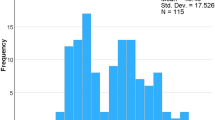Abstract
Objectives
The objective of this study was to compare clinical outcomes of patients with candidaemia before and after implementation of an antifungal stewardship program (AFSP).
Methods
This study included all consecutive cases of candidaemia identified from January 2012 to December 2015 in a French University Hospital. Data were collected retrospectively for a period of 2 years before implementation of the AFSP, and prospectively for 2 years after. All cases were reviewed by a multidisciplinary panel of experts including infectiologists, a microbiologist and pharmacists to have a complete follow-up of patients.
Results
33 and 37 patients were finally included in the first and second period, respectively. The sites of entry of the candidaemia cases studied were as follows: intraabdominal in 29 cases (41.4%), central venous catheter 21 (30.0%), other or unknown: 20 (28.6%). Infectiologist consultations increased from 36.4 to 86.5% between the two periods with a significative impact on daily blood cultures which were more frequently performed in the second period (p = 0.04), and the use of echinocandins which was more frequent in the second period (97.1% of cases vs 78.8%, p = 0.03). The 3-month mortality rate declined from 36.4% in the first period to 27.0% in the second period (p = 0.4).
Conclusions
Despite the insufficient number of candidaemia cases and the presence of other unmodifiable risk factors of mortality which did not allow us to show a significant effect on the 3-month mortality, AFSP had a significant effect on daily blood cultures and echinocandin use as first-line therapy.
Similar content being viewed by others
References
Wisplinghoff H, Bischoff T, Tallent SM, Seifert H, Wenzel RP, Edmond MB. Nosocomial bloodstream infections in US hospitals: analysis of 24,179 cases from a prospective nationwide surveillance study. Clin Infect Dis Off Publ Infect Dis Soc Am. 2004;39:309–317.
Kullberg BJ, Verweij PE, Arendrup MC, Bille J, Calandra T, Cuenca-Estrella M, Donnely JP. European expert opinion on the management of invasive candidiasis in adults. Clin Microbiol Rev. 2011;17:1–12.
Bitar D, Lortholary O, Le Strat Y, Nicolau J, Coignard B, Tattevin P, et al. Population-based analysis of invasive fungal infections, France, 2001–2010. Emerg Infect Dis Rev. 2014;20:1149–1155.
Kullberg BJ, Arendrup MC. Invasive candidiasis. N Engl J Med. 2015;373:1445–1456.
Falagas ME, Apostolou KE, Pappas VD. Attributable mortality of candidemia: a systematic review of matched cohort and case-control studies. Eur J Clin Microbial Infect Dis. 2006;25:419–425.
Pfaller MA, Diekema DJ. Epidemiology of invasive candidiasis: a persistent public health problem. Clin Microbiol Rev. 2007;20:133–163.
Morrell M, Fraser VJ, Kollef MH. Delaying the empiric treatment of candida bloodstream infection until positive blood culture results are obtained: a potential risk factor for hospital mortality. Antimicrob Agents Chemother. 2005;49:3640–3645.
Almirante B, Rodríguez D, Park BJ, Cuenca-Estrella M, Planes AM, Almela M, et al. Epidemiology and predictors of mortality in cases of Candida bloodstream infection: results from population-based surveillance, Barcelona, Spain, from 2002 to 2003. J Clin Microbiol. 2005;43:1829–1835.
Blot SI, Vandewoude KH, Hoste EA, Colardyn FA. Effects of nosocomial candidemia on outcomes of critically ill patients. Am J Med. 2002;113:480–485.
Valerio M, Rodriguez-Gonzalez CG, Muñoz P, Caliz B, Sanjurjo M, Bouza E, et al. Evaluation of antifungal use in a tertiary care institution: antifungal stewardship urgently needed. J Antimicrob Chemother. 2014;69:1993–1999.
Davey P, Marwick CA, Scott CL, Charani E, McNeil K, Brown E, et al. Interventions to improve antibiotic prescribing practices for hospital inpatients. Cochrane Database Syst Rev. 2017;2:CD003543.
Lawes T, Lopez-Lozano JM, Nebot CA, Macartney G, Subbarao-Sharma R, Dare CR, et al. Effects of national antibiotic stewardship and infection control strategies on hospital-associated and community-associated meticillin-resistant Staphylococcus aureus infections across a region of Scotland: a non-linear time-series study. Lancet Infect Dis. 2015;15:1438–1449.
Huttner B, Harbarth S, Nathwani D. ESCMID Study Group for Antibiotic Policies (ESGAP). Success stories of implementation of antimicrobial stewardship: a narrative review. Clin Microbiol Infect Dis. 2014;20:954–962.
Cornely OA, Bassetti M, Calandra T, Garbino J, Kullberg BJ, et al. ESCMID* guideline for the diagnosis and management of Candida diseases 2012: non-neutropenic adult patients. Clin Microbiol Infect. 2012;18:19–37.
Antworth A, Collins CD, Kunapuli A, Klein K, Carver P, Gandhi T, et al. Impact of an antimicrobial stewardship program comprehensive care bundle on management of candidemia. Pharmacotherapy. 2013;33:137–143.
Rac H, Wagner JL, King ST, Barber KE, Stover KR. Impact of an antifungal stewardship intervention on optimization of candidemia management. Ther Adv Infect Dis. 2018;5:3–10.
Apisarnthanarak A, Yatrasert A, Mundy LM. Thammasat University Antimicrobial Stewardship Team. Impact of education and an antifungal stewardship program for candidiasis at a Thai tertiary care center. Infect Control Hosp Epidemiol. 2010;31:722–727.
Micallef C, Aliyu SH, Santos R, Brown NM, Rosembert D, Enoch DA. Introduction of an antifungal stewardship programme targeting high-cost antifungals at a tertiary hospital in Cambridge, England. J Antimicrob Chemother. 2015;70:1908–1911.
Agrawal S, Barnes R, Brüggemann RJ, Rautemaa-Richardson R, Warris A. The role of the multidisciplinary team in antifungal stewardship. J Antimicrob Chemother. 2016;71:ii37–ii42.
Muñoz P, Bouza E. COMIC (Collaboration Group on Mycosis) study group. The current treatment landscape: the need for antifungal stewardship programmes. J Antimicrob Chemother. 2016;71:ii5-ii12.
Aguado JM, Silva JT, Bouza E. Conclusion and future perspectives on antifungal stewardship. J Antimicrob Chemother. 2016;71:ii43–ii44.
Acknowledgements
The authors are grateful to Ms. Sophie Pricot for her proofreading of the present.
Funding
This study was carried out as part of our routine work and no funding was received by the authors.
Author information
Authors and Affiliations
Corresponding author
Ethics declarations
Conflict of interest
The authors declare that they have no conflict of interest related to the study.
Rights and permissions
About this article
Cite this article
Benoist, H., Rodier, S., de La Blanchardière, A. et al. Appropriate use of antifungals: impact of an antifungal stewardship program on the clinical outcome of candidaemia in a French University Hospital. Infection 47, 435–440 (2019). https://doi.org/10.1007/s15010-018-01264-4
Received:
Accepted:
Published:
Issue Date:
DOI: https://doi.org/10.1007/s15010-018-01264-4




